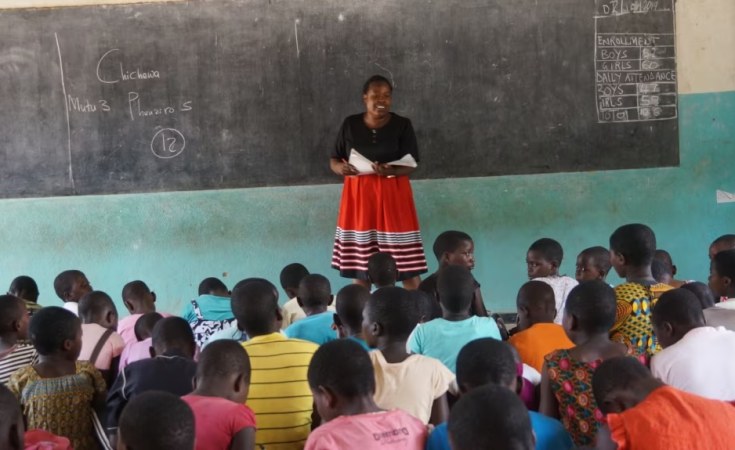Blantyre, Malawi — The U.S. government handed over 66 secondary schools that it built for students in rural Malawi under the USAID-funded Secondary School Expansion for Development project, or SEED.
The project is a partnership of the U.S. government through the United States Agency for International Development and the U.S. President's Emergency Plan for AIDS Relief.
Amy Diaz, deputy ambassador at the U.S. Embassy in Malawi, said the $90 million project started in 2019 with an initial plan to build 200 schools across Malawi. That number was reduced to 89 because of the onset of the COVID-19 pandemic, which created many challenges, including a rise in the cost of building materials.
"When the costs increased, we worked with the ministry of education to narrow down the new school construction sites to the areas of greatest need in each district. With a handover of 66 schools today, we are on track to complete construction of 89 new rural schools by the end of this year," Diaz said.
About 27,000 students will now have access to secondary school education. The new schools have reduced the distance many learners have to walk to get to classes, with some living 10 kilometers away.
President Lazarus Chakwera presided over the televised handoff ceremony Monday in the Salima district of central Malawi. He called the event a milestone in Malawi's partnership with the U.S.
"A partnership that produces 66 brand new secondary schools, serving communities across 20 districts, is no ordinary partnership. A partnership that expands access to secondary education for tens of thousands of our youths is no ordinary partnership," Chakwera said.
Education analysts say it is Malawi's government that needs to improve the quality of education and stop vandalism of public schools. Several government secondary schools were closed recently due to vandalism by angry students.
"We have a scenario here where the government is unable to renovate the vandalized infrastructure, thereby keeping the students out of learning," said Benedicto Kondowe, an education expert and executive director for the Civil Society Education Coalition in Malawi. "Therefore, the extent of school vandalism that we have had presented a very dangerous course in this country. Once we do not take care of the infrastructure that we have, chances are high most people will be kept out of the education system."
Kondowe said he also hopes construction of the new schools will help reduce unemployment among teachers, who have long held protests pushing the government to hire them.
Chakwera said his administration will recruit 5,000 secondary school teachers following the construction of the U.S.-funded schools.
"This is why my administration has invested heavily by expanding the teacher base by increasing the teaching staff by 50%, adding 13,000 teachers to the staff roll," he said. "Apart from increasing the quantity, we also want to increase the quality of teaching. And that includes improving the condition of service for teachers and school administrators."
Willie Malimba, president of the Teachers Union of Malawi, said 5,000 teachers are just the tip of the iceberg in a country with a massive shortage of professional educators, and that existing schools may remain understaffed.
"If those 5,000 teachers are adding up to already existing secondary schools, we could say at least it's a little bit better," Malimba said. "But now, we are going to have 66 additional secondary schools. This means these 5,000 will be directly absorbed by the 66 additional secondary schools. Which means shortfalls that are already there in some secondary schools, they are still there."
The education ministry has announced plans to add more structures to the newly constructed secondary schools, including a laboratory block, a library, eight teachers' houses and an administration section.
It says this is in line with the newly introduced minimum package required for the country's secondary school infrastructure.


